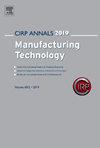无取向电工钢的低温下料
IF 3.6
3区 工程技术
Q2 ENGINEERING, INDUSTRIAL
引用次数: 0
摘要
在零下温度下使用液氮进行下料是一种创新的无取向电工钢(NOES)切割方法,可以减少分离所需的塑性变形,并最大限度地减少可能影响板材特性的微观结构变化。研究了三种工艺温度——室温、-50°C和-100°C,并根据切削刃质量、显微组织特征和硬度演变对结果进行了评估。结果表明,切割边缘的塑性变形区和硬度变化显著减少,同时微结构取向错误减少,突出了该方法最大限度地减少传统冲裁缺点的潜力。本文章由计算机程序翻译,如有差异,请以英文原文为准。
Sub-zero temperature blanking of non-oriented electrical steels
Blanking at sub-zero temperatures using liquid nitrogen is presented as an innovative method for cutting non-oriented electrical steel (NOES) to reduce the plastic deformation required for separation and minimize microstructural changes that could impact the sheet's characteristics. Three process temperatures – room temperature, -50 °C, and -100 °C – were investigated, and the results were evaluated in terms of cut edge quality, microstructural features, and hardness evolution. The results demonstrated a significant reduction in the plastically deformed zone and hardness variation at the cut edge, accompanied by decreased microstructural misorientation, highlighting this method's potential to minimize the drawbacks of conventional blanking.
求助全文
通过发布文献求助,成功后即可免费获取论文全文。
去求助
来源期刊

Cirp Annals-Manufacturing Technology
工程技术-工程:工业
CiteScore
7.50
自引率
9.80%
发文量
137
审稿时长
13.5 months
期刊介绍:
CIRP, The International Academy for Production Engineering, was founded in 1951 to promote, by scientific research, the development of all aspects of manufacturing technology covering the optimization, control and management of processes, machines and systems.
This biannual ISI cited journal contains approximately 140 refereed technical and keynote papers. Subject areas covered include:
Assembly, Cutting, Design, Electro-Physical and Chemical Processes, Forming, Abrasive processes, Surfaces, Machines, Production Systems and Organizations, Precision Engineering and Metrology, Life-Cycle Engineering, Microsystems Technology (MST), Nanotechnology.
 求助内容:
求助内容: 应助结果提醒方式:
应助结果提醒方式:


